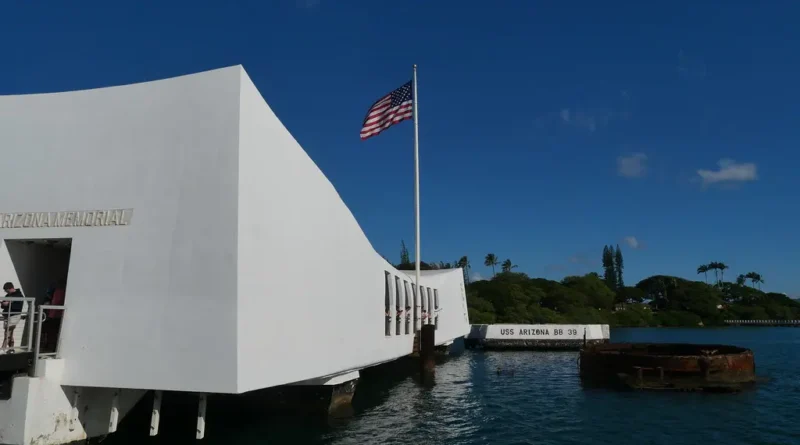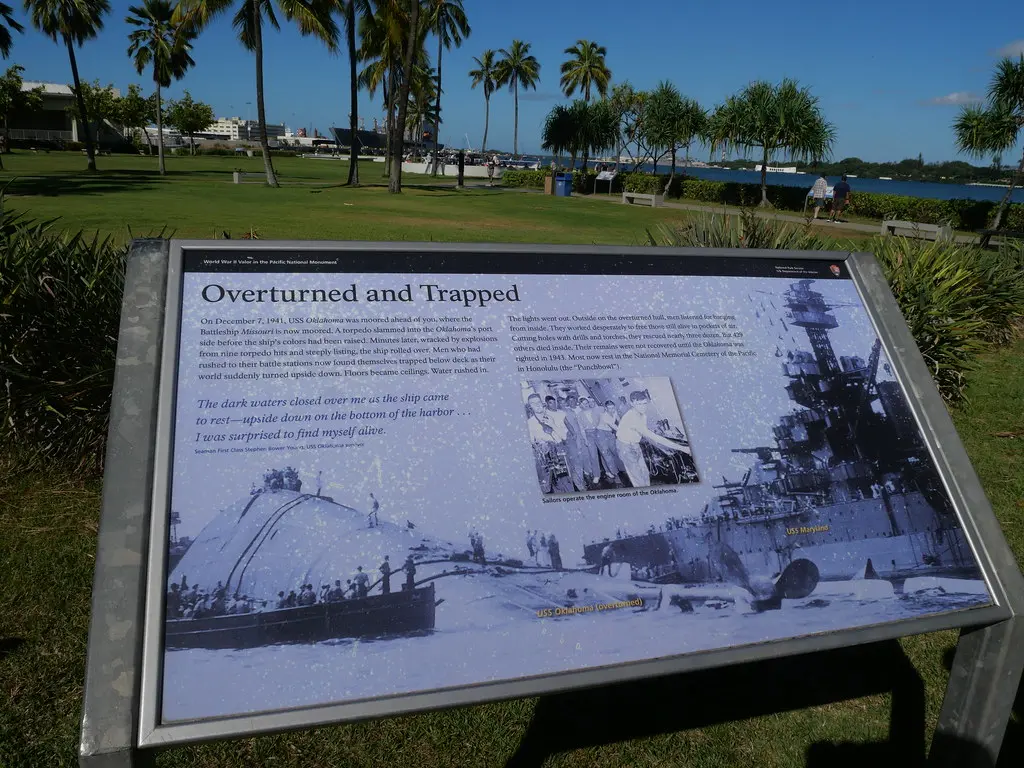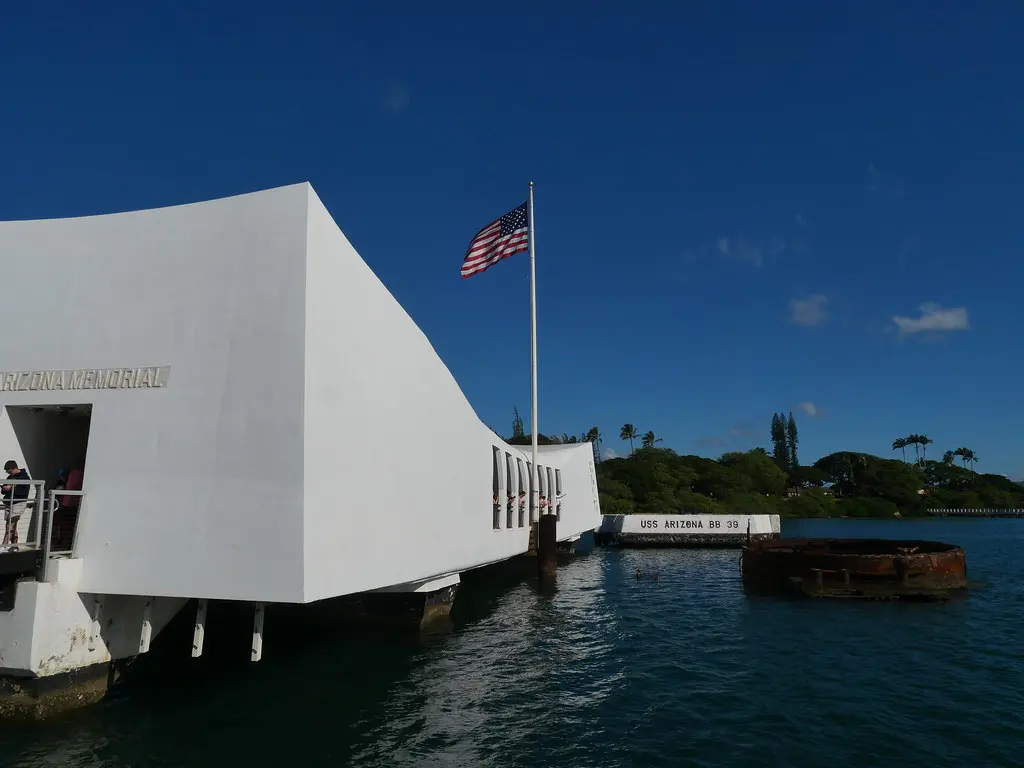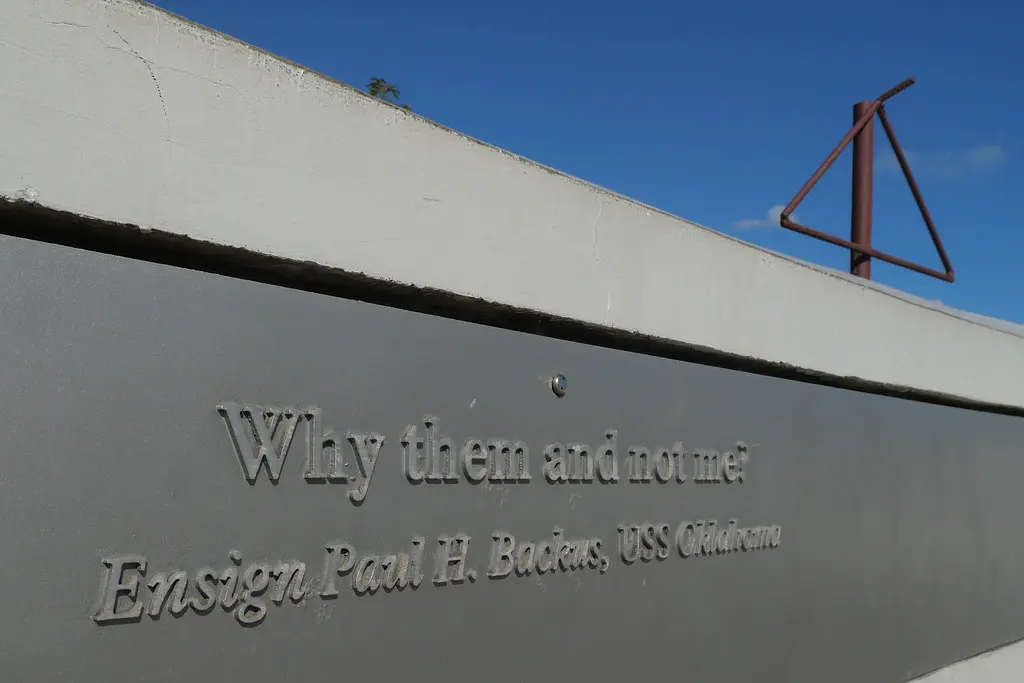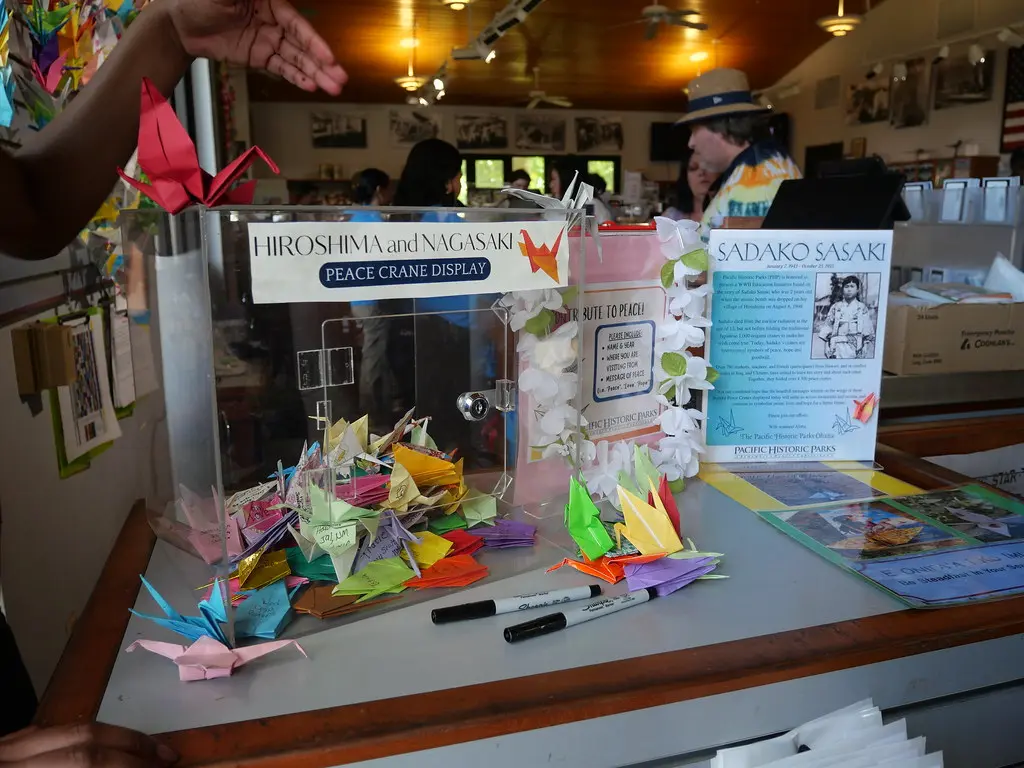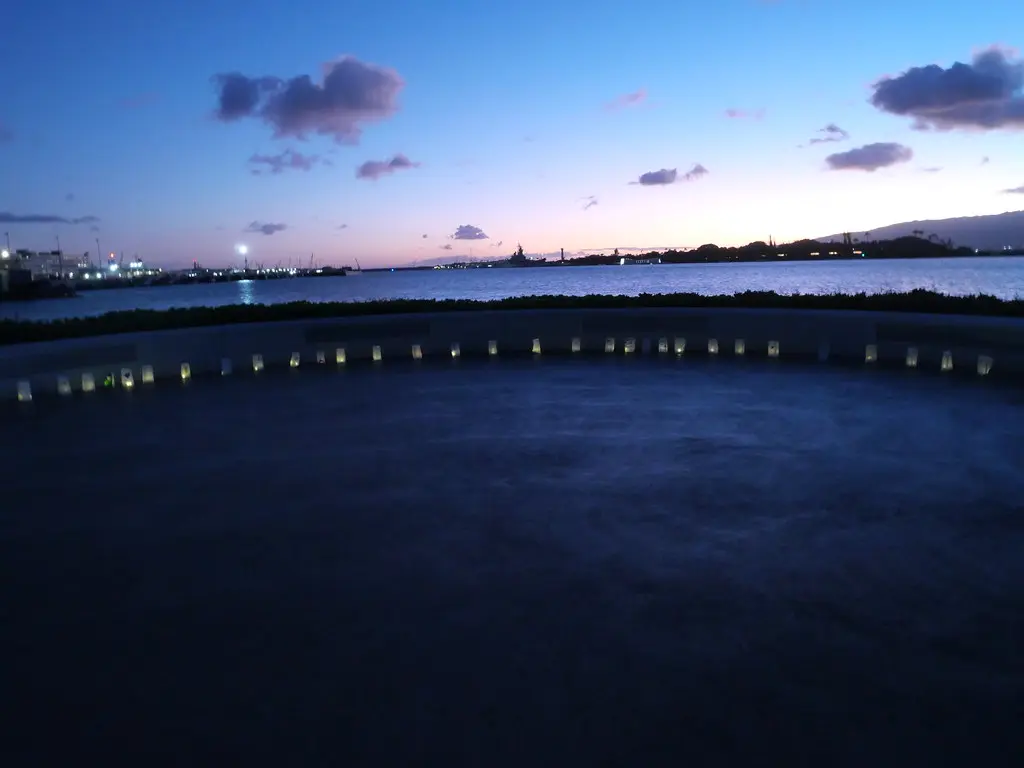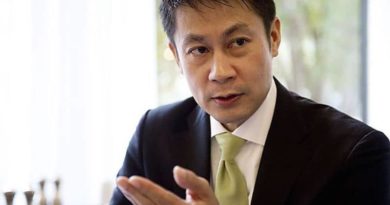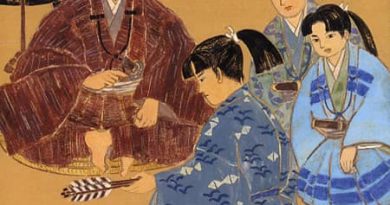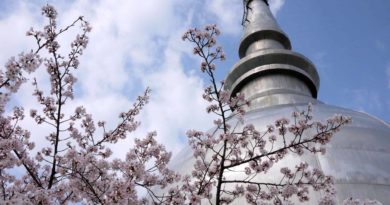Visiting Pearl Harbor on Hiroshima Day
August 6th 2024 was the 79th anniversary of the nuclear attack on Hiroshima. Now as a long-time resident of Hiroshima, I am usually spending the day at peace park- taking in the commemorations, peace protests, floating lanterns and powerful speeches of the day. But this year, as I was on break in Hawaii, it was a chance to spend Hiroshima day at Pearl Harbor.
A lot of the American visitors I guide on tours in Hiroshima say they think of the surprise nuclear attacks on Hiroshima and Nagasaki in 1945 as a consequence of the Pearl Harbor surprise attack by the Japanese in 1941.
Most visitors come to Hiroshima with a strong belief that dropping the A-bomb on Hiroshima and Nagasaki was the only way to end WWII and saved hundreds of thousands of lives on both sides. After years of living in, and learning about, Hiroshima’s story, I don’t think the story is quite as matter-of-fact as those statements.
Why visit Pearl Harbor on Hiroshima day?
I wanted to visit to see the interconnected narratives at Pearl Harbor in connection with Hiroshima. It was also a chance to see if there were any new initiatives and projects in place between these two historical parks since the “sister peace park agreement” was set up by the US ambassador to Japan and the Mayor of Hiroshima in 2023.
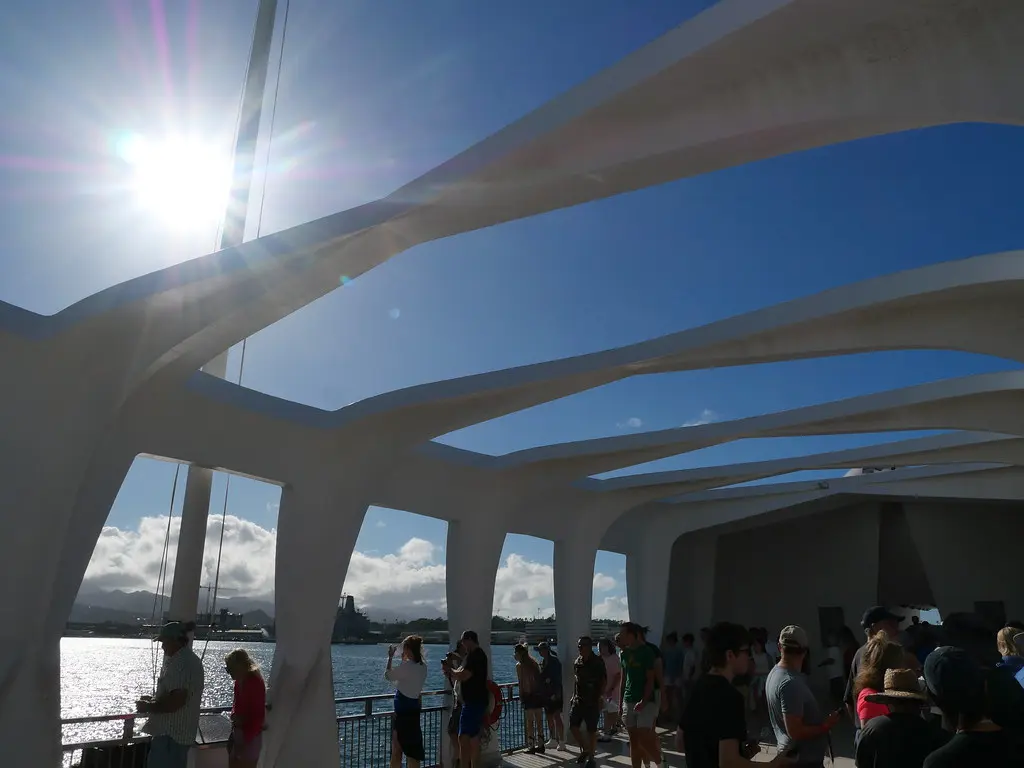
We arrived at the Pearl Harbor memorial at 7am on August 6th to beat the crowds. After we paid for parking, we could visit for free. We felt lucky to head out on the first boat of the day to the Arizona memorial — a beautifully designed, peaceful, floating pavilion above the sunken ship USS Arizona where the bodies of more than 900 sailors and marines were kept where they died.
Before heading out on the boat, we were given a 30-minute orientation by a passionate ranger who gave us a powerful talk encouraging us visitors to maintain our sense of place. As a guide in Hiroshima, I really appreciated how the rangers primed the visitors to be respectful and thoughtful during their visit. Some of the things the rangers said in the orientation session before we went to the Arizona memorial really left a strong impact on me:
This is a powerful and important place. As you stand above the sunken ship remember that you are visiting a grave- people visit here to pay their respects to their loved ones. This is not an attraction. If you can’t stay off of your phone for the next hour, this is not the place for you. – words of the Pearl Harbor Ranger at Pearl Harbor on August 6, 2024 –
There were detailed stories of the attack and information about the 2,403 soldiers and civilians who died that day. Stories of the aftermath included stories of interment and discrimination against Hawaii locals of Japanese ancestry. Post Pearl Harbor, there was a strong determination to fight back and never let Pearl Harbor happen again.
After Pearl Harbor the USA officially entered WW2 and a brutal conflict with Japan began which went on for almost four years.
The commemorative plaque above displays a quote from a Pearl Harbor survivor, “Why them and not me?” Ensign Paul H. Backus, USS Oklahoma. We also hear many Hibakusha survivors of the attack on Hiroshima and Nagasaki who said the same thing.
Inside the museum, there are many stories of other survivors on Oahu who were discriminated against because of their Japanese ancestry. A third of Hawaii’s population in 1941 was people who immigrated from Japan. There are many stories from survivors of prejudice and loss of freedom after the attack. Many people were forced to take down any pictures of their Japanese relatives and destroy images of the emperor. People of Japanese descent were put into detention centers. Some young men were taken to dog training camps where they were tortured by soldiers who used them as attack dog targets training to “smell the Japanese enemy.” Many felt they were Americans and horrified to lose their jobs and freedom because of their ethnicity.
Video testimonies of Japanese who faced hardship in Japan told stories of life during the war in Tokyo and Nagano. Some spoke of the changes and hardships they faced from changing their school uniforms – which were too similar to the US sailors uniforms- to being told to fight to the death with flimsy bamboo spears, to living through hardships of war without enough food and clothes.
Sister Historical Peace Park Agreement
In 2016, President Obama and Prime Minister Shinzo Abe visited both Hiroshima on August 6th and Pearl Harbor on December 11th as an effort at peaceful collaboration between the two countries at these two key WW2 historical sites for allies Japan and the USA.
“By connecting our two peoples to our shared past, we can build a shared future grounded in peace and cooperation,” President Barack Obama, 2016.
In 2023, the American Ambassador to Japan, Rahm Emanuel, and the Mayor of Hiroshima Kazumi Matsui signed a sister peace-park agreement to further establish peaceful ties through collaboration between Pearl Harbor and Hiroshima Peace Memorial Park.
“Nobody can go to Pearl Harbor, and nobody can go to the Hiroshima Peace Memorial and enter the front door, walk out the exit door and be the same person,” Rahm Emanuel, US Embassy in Tokyo.
Knowing about this sister-park relationship we were surprised that there were no testimonies from Hibakusha A-bomb survivors from Hiroshima or Nagasaki at the pearl harbor museum. We also couldn’t find any information about the sister historical park agreement.
We were encouraged to see a section about Sadako Sasaki and the thousand cranes and also pleased to learn about a peace light-up event on the 7th (which the rangers said they hold annually) during the week of the anniversary of the Hiroshima and Nagasaki bombings.
The light-up for peace event at Pearl Harbor was a very small gathering of local people and rangers at the memorial. It was a moving event and felt special to represent people from Hiroshima. It felt like a positive step toward creating more collaboration and mutual respect in commemorations between Japan and America. The rangers said they were also welcoming A-bomb survivors to visit Pearl Harbor later in the month.
At the light up event, a ranger spoke of a Japanese farmer in Shizuoka, Fukumatsu Ito who tried to help American pilots who crashed in his town after killing thousands of his friends and neighbors. When the American soldiers died, Ito buried them alongside his friends and neighbors who they had killed and prayed for those lost on both sides of the war. Each year, Ito poured out whiskey onto both the graves of the Japanese and Americans — from a blackened canteen he pulled from the American plane wreckage- despite the ridicule he received.
Whiskey was poured into the waters above the sunken USS Arizona by a friend of Ito, Dr.Sugano, who promised to carry on the tradition after Ito died, on December 6th, to commemorate the 50th anniversary in 1991 and again in 2017.
“I hope this ceremony will move us a step closer to world peace,” Dr. Sugano said.
At the light-up ceremony on August 7, we placed candles in white bags that visitors to the Pearl Harbor memorial had decorated with messages of hope and peace. There were also opportunities to fold orizuru origami cranes, listen to stories and a musical performance. We met so many interesting local people and passionate rangers who are sincerely working toward a more peaceful future through mutual respect of these important days of remembrance.
Oppenheimer Film Effect on Hiroshima Tourism
As a guide of the peace memorial park in Hiroshima, I have noticed a shift in perspective from visitors since the Oppenheimer film release in 2023. More international tourists are interested in visiting Hiroshima and now arrive with a more critical view of the A-bomb decision. More visitors seem interested in a multifaceted discussion than a simple justification as they were originally taught at school. Many also wonder if Japan would have surrendered earlier if certain changes were made to the agreement and there wasn’t such a rush to use the nuclear bomb.
overwhelming historical evidence from American and Japanese archives indicates that Japan would have surrendered that August, even if atomic bombs had not been used — and documents prove that President Truman and his closest advisors knew it. LA Times, 2020
The 2023 academy award winning film Oppenheimer showed the drive of scientists to develop the nuclear bomb as well as the strong political motivations of American leaders to be the first country to use the nuclear bomb.
Of course, we will never know if there was a non-nuclear option to end the war in Japan, but before the August 6th ceremony on this 79th anniversary, 5,074 additional names (as they do each year) were added to update the number of names written on books kept under the cenotaph memorial monument. Now 344,306 is the number documented on thousands of books located under the cenotaph. Names of Japanese, American, Korean, and other nationalities who were were in the 2km blast zone and who died as a direct (or delayed) result of the nuclear attack on Hiroshima.
More Clarity and Ownership of the Past Needed
The Hiroshima peace memorial park and museum says very little about Pearl Harbor– there is one section which states:
In December 1941, the Pacific War began with the Japanese military landing on the Malay Peninsula and carrying out a surprise attack on the U.S. base at Pearl Harbor, Hawaii.
And as I mentioned above, there is also very little at the Pearl Harbor museum about the nuclear attacks on Hiroshima and Nagasaki. It’s difficult to objectively discuss these controversial aggressions during wartime, but these are the aspects of history that need the most care for clarity and honesty.
I hope these are aspects at both the Pearl Harbor and Hiroshima museums that could be improved upon now there is a renewed sense of collaborative focus with the historical peace park sister agreement. If groups from both sides can sit together and work on how the stories are written, it would be more fair, honest and meaningful.
A large part of the Pearl Harbor museum is focused on Japan’s military development, tactical decisions, and wartime hardships (by the Japanese government) for people in Japan. As of 2024, there is only a brief explanation of Hiroshima and Nagasaki attacks titled “Long Road to Peace,”
The war against Japan was brutal. Americans and their allies fought relentlessly against fierce resistance across the islands of the Pacific, through the jungles of Southeast Asia, and in the skies over Japan. The war culminated with the dropping of two atomic bombs, on Hiroshima on August 6 and Nagasaki on August 9, 1945. On August 15, the Japanese surrendered. (Pearl Harbor Museum, August 6, 2024 visit)
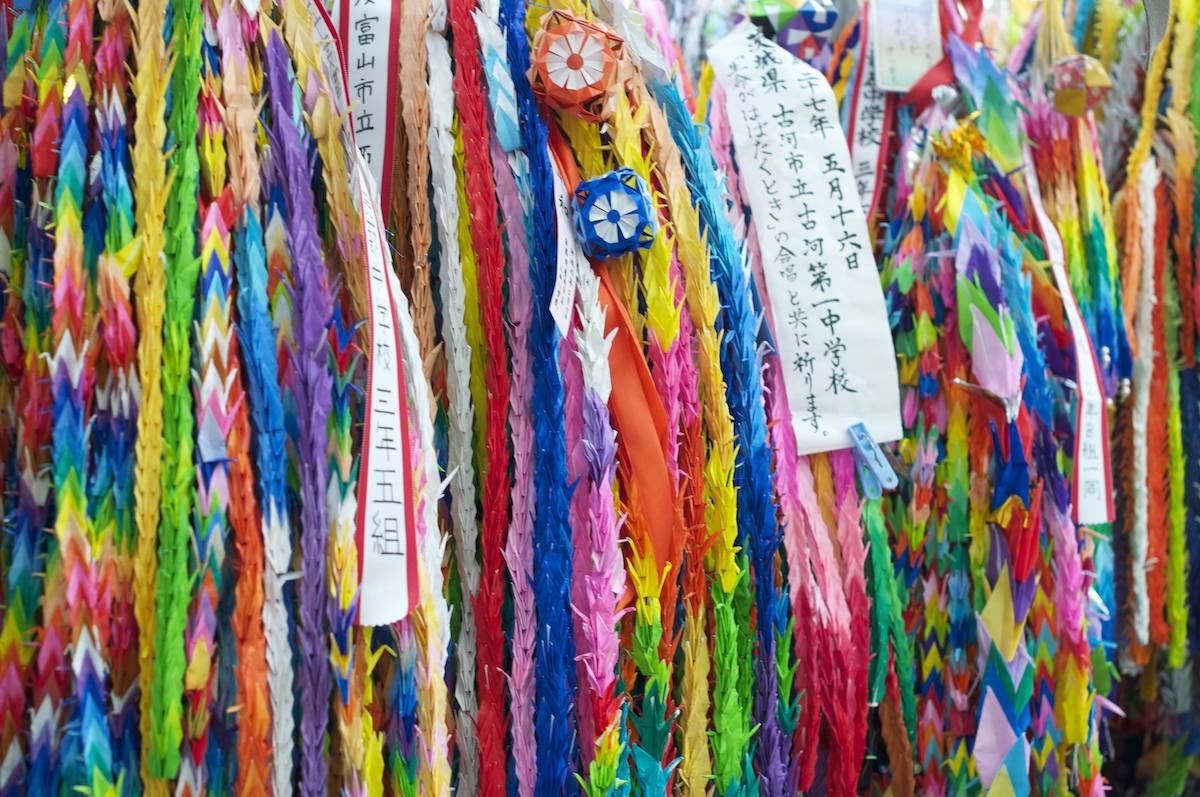
Sadako Sasaki
It would be an improvement at Pearl Harbor to provide information about the decision to use nuclear weapons on Japan and how many people were killed and suffered from the nuclear attacks of Hiroshima and Nagasaki.
At the end of the museum route, opposite the “Long Road to Peace” information board is a section about Sadako Sasaki where 1000’s of cranes for peace are hanging. The pictures displayed of Sadako, next to thousands of peace cranes folded by local Hawaii groups, are of Sadako as a young girl in her school uniform, with her family, and with classmates at Hiroshima’s beautiful Shukkeien gardens in front of a famous A-bomb survivor stone bridge.
Sadako Sasaki, she was only 2 at the time of the nuclear attack on Hiroshima in 1945, but seemed okay at the time. She was very sporty in elementary school and had many friends. Then, 10 years after the bombing, she started getting sick and her friends couldn’t believe it. Sadako and her family and friends were all folding cranes in hopes she would get better.
At the same time, Sadako’s classmates campaigned and raised funds to create the children’s monument in the center of peace park which has become a central focus of student groups visiting the park. It is a stunning memorial with Sadako standing atop holding a crane. Groups visiting the peace park gather here to sing, make speeches about peace, and then hang thousands of orizuru peace cranes which they had made together in their peace education classes.
At the Pearl Harbor gift shop, we were happy to see another section dedicated to the story of Sadako Sasaki and a chance to write messages of hope and peace on the wings of folded orizuru peace cranes. Years ago, on a visit to Hawaii, I also had the opportunity to see a wonderful musical play called “Peace on your wings,” performed by local Hawaii youth about Japan‘s school culture, festivals and a powerful interpretations of Sadako Sasaki’s life and death. Sadako’s brother, Masahiro Sasaki, was also at the same performance and it was wonderful to hear him speak about his memories of Sadako and the need for peace in both Japan and America.
In our nearly thirty years in Hiroshima, we have seen how displays and narratives are adapted in efforts to remain relevant for visitors over time. I have always respected and appreciated the difficult task of museum curation at the Hiroshima peace memorial park and pearl harbor- giving visitors a sense of place and showing respect for lives lost on both side of the war.
I was skeptical of the sister-peace-park initiative, but now feel hopeful after this visit on August 6th to the Pearl Harbor memorial, and again for the peace light up event on the evening of the 7th. This experience has given me a renewed respect for the changes happening at Pearl Harbor memorial museum.
The new historical park agreement between Hiroshima and Pearl Harbor seems like an opportunity to add the necessary layers of complexity and mutual understanding to the politics, devastation and aftermath of the attacks by both Japan and the USA during WW2. Peace and conflict negotiation are ongoing duties for all of us.
It was even more special to go to Pearl Harbor on Hiroshima day with our daughter who has grown up bilingually and bi-culturally as an American-British citizen in Hiroshima. She said she was deeply impacted by the Japanese music of peace played at the Pearl Harbor light-up event which she recognized from her days at public school in Japan.
She chose to write her messages of hope for peace in Japanese on the illumination bags at Pearl Harbor and when she is in Hiroshima, she volunteers to interpret Hibakusha A-bomb survivor testimony into English. If you visit the Hachidori-sha Peace, Social Book cafe- you can hear Hibakusha A-bomb survivor testimony there on any day of the month with a 6 (6, 16, 26).
It is a more peaceful future for kids like our daughter- doing their part to develop better mutual understanding — that drives me to do what I can for the benefit of future generations.


